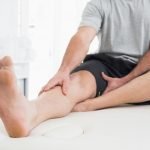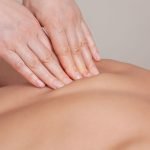Basket Weaving: How Neurasthenia Inspired the Arts & Crafts Movement and More
Jacob Schor, ND, FABNO
During our time at home this past spring, I took up 2 new hobbies: chair caning and basket making. I can’t claim to be particularly accomplished at either. If you want to joke about me being a basket case, don’t feel too clever; the suggestion has already been made.
In the process of acquiring these skills, I ended up learning some things about naturopathy and the origins of our world views that I want to share with you.
I launched my chair-caning hobby by caning several canoe seats. I discovered that the activity has a meditative quality to it that was surprisingly calming and, at the same time, addictive. It took effort to stop. I moved on to basket making, initially weaving classic Adirondack basket packs. Basket making has a long-standing reputation as a useful pastime for those in need of mental rehabilitation, at least before the advent of psychoactive medications. Less politically correct people still use the term basket-case to describe someone in a far-from-ideal state of mental equanimity. Caning my canoe seats was mentally soothing and slightly addictive; weaving baskets was even more so. The repetitive over-and-under manual repetition does something pleasant inside my head. Once I start a project, I hesitate to stop. Moving an active strand over and under the standing strands may be the mental equivalent to a physical cross-crawl. It is easy to imagine that either craft would have beneficial effects on mental function and that research would associate these activities with all sorts of cognitive and emotional benefits and changes on brain scans. Yet repeated PubMed searches, in hoping to validate this hunch, came up empty.
That’s because the therapeutic utilization of basketry and other handicraft activities is an old idea. It dates back to an era when the opinions of eminent practitioners were reason enough to implement a practice; our modern evidence-based-medicine thing had yet to occur. I learned much of the following after reading a 2011 historic review by J. Laws titled, “Crackpots and basket-cases: a history of therapeutic work and occupation.”1
Laws explains how a convergence between the social phenomenon known as the “Arts and Crafts Movement” intersected with an epidemic of an ailment called neurasthenia. This intersection gave rise to the profession now known as occupational therapy.
The Arts & Crafts Movement
Let’s back up to the mid-1800s, when the Industrial Revolution had just swept across England and then the United States, causing major upheavals in social order and quality of life. Not everyone was happy with the changes. This is precisely when John Ruskin and William Morris initiated the Arts and Crafts Movement. It was in their writing and philosophizing that my appreciation of basket making probably originated. Ruskin was of the belief that machines and factory work limited human happiness and that people should return to a more authentic and simpler way of life. He preached a highly romanticized version of the Middle Ages, where people all made their livings engaged in cottage crafts. He judged that manufactured, factory-produced goods, which were becoming commonplace in the 1800s, were “… both aesthetically and morally unsatisfying because the worker was treated like an extension of the machine, completing only a part of the finished product.”2 In my mind, that life according to Ruskin would be like living in one of those historic theme parks listed online as “living history museums” – places like Sturbridge Village.
William Morris expanded upon Ruskin’s philosophy and, in modern terms, monetized Ruskin’s ideas, creating a decorative arts empire selling textiles, furniture, and wallpaper. He put the art into artisanal. Their Arts and Crafts philosophy and their ideas about home furnishing styles crossed the Atlantic and became popular among America’s well-to-do. If this style isn’t familiar to you, look online at images of Stickley furniture, as they are perfect examples of the American version of Arts and Crafts.
“Proponents were eager reformers celebrating nature, authentic experience, and honest design. Like their British contemporaries, they displayed a patrician contempt for the system of mass production, which was keyed to lower class tastes. They advocated the use of natural materials and processes and the purchase and use of handmade items that were straightforward and simple in design. Indeed, for some advocates, the Arts-and-Crafts movement meant quality of design as much as quality of life.”2
The Arts and Crafts Movement reached its high point at nearly the same time that the neurasthenia epidemic swept across America. Neurasthenia isn’t a term used in modern medicine anymore; however, it was a huge thing back in the day. The term first appeared in print in 1829, but it wasn’t until 1869 that it was popularized as a medical diagnosis by George Miller Beard and E. H. Van Deusen of the Kalamazoo asylum, though they didn’t agree on a definition or etiology.3,4 Van Deusen believed that the condition was caused by social isolation and a lack of engaging activity among rural women, while Beard saw the condition as something that overly busy society women and overworked businessmen were prone to.
Figure 1. George Miller Beard

George Miller Beard is considered the “father” of neurasthenia.
Treatments for Neurasthenia
Neurasthenia was considered a weakness of the nerves. Medical thinking at the time considered the body as a sort of electrical machine, with the nervous system acting like wires that distributed energy. The fast paced, rapidly shifting modern world back then, with people moving from the farm to big, busy cities with too much stimulation, led people to expend too much of their “nervous energy” and become depleted as a result. Daily newspapers delivered more information on current events than people could keep up with. Railroads allowed way too rapid travel. New ideas and styles spread like epidemics. It was all too much for some people. The resultant state of collapse was termed neurasthenia.
Symptoms of neurasthenia included headaches, muscle pain, weight loss, irritability, anxiety, impotence, depression, “a lack of ambition,” and both insomnia and lethargy. Julie Beck, writing in a 2016 issue of The Atlantic, described neurasthenia, as, “… a disease of culture as much as of the mind and body. Beard thought that people in earlier societies could not have been neurasthenic because they weren’t exposed to the modern things that depleted nervous energy, particularly ‘steam power, the periodical press, the telegraph, the sciences, and the mental activity of women.’”5
The first treatment for neurasthenia to come into fashion was called the Rest Cure. It was developed by Silas Weir Mitchell (1829-1914) in the mid 1800s.6 Mitchell specialized in nervous diseases in Civil War veterans for most of his career, but developed the Rest Cure to treat neurasthenia and hysteria in women. The treatment involved 6-8 weeks of isolation, bed rest, a high-calorie diet, massage, and electrotherapy. For men, he suggested a very different approach. In his 1871 book, Wear and Tear or Hints for the Overworked,7 he suggested that neurasthenic men should strengthen their nerves by engaging in “a sturdy contest with Nature.” This idea became known as the “West Cure.” Neurasthenic men were sent out west to engage in vigorous physical activity for prolonged periods – activities such as cattle roping, hunting, roughriding and male bonding – and to write about the experience.8 Teddy Roosevelt and Walt Whitman were both among the many neurasthenics who underwent this treatment.
Figure 2. Silas Weir Mitchell

Silas Weir Mitchell developed the “Rest Cure.”
These treatment ideas for neurasthenia obviously reflected underlying beliefs in traditional gender roles that some today would find objectionable, what we might call historical medical misogyny. The thinking back then was that God created men to work outdoors and that spending too much time indoors put them at risk for neurasthenia. Women, on the other hand, were supposed to stay home tending their households; too active a social life and time spent outside of the home left them vulnerable.
As old fashioned as some of these ideas now seem, we owe many popular conventions to the views preserved from that era on how to reduce risk of neurasthenia. Creation of our national park system is credited to the belief that neurasthenics needed to retreat back into nature to heal. Nature is the healing force, an idea that still remains at the core of naturopathic medicine. Having recess times in public schools is also a practice leftover from neurasthenic prevention strategies. There was a fear that sitting too long in a classroom was bad for children’s nervous systems. Activities such as traveling on vacations, bike-riding, and sports leagues were promoted by medical thinkers to reduce the risk of developing neurasthenia.5
In 1910, Herbert Hall, MD, opened a clinic in Marblehead, Massachusetts, and promoted a “workcure” for neurasthenia based on ideas he borrowed from the Arts and Crafts Movement. A similar program was begun in Worcester, Massachusetts, by Adolf Meyer at about the same time. William Rush Dunton started a program in Maryland. Patients spent a good part of their day engaged in art and craft activities. Apparently, this approach worked well and quickly spread widely. Residential workshops were created to both foster skill development and generate income through the selling of the items produced by participants.
A textbook titled Studies in Invalid Occupation: A Manual for Nurses and Attendants, written by Susan Edith Tracy, was first published in 1912.9 Tracy offered detailed descriptions of the arts and crafts training courses she used at the Boston Nervine Hospital, and her program was widely copied. Her book became the blueprint for training practitioners in what later became known as occupational therapy. Our retained image of patients weaving baskets dates all the way back to that era. No wonder there are no randomized controlled trials demonstrating efficacy; they may not have been needed. It might be like prunes with results so obvious that no one felt obligated to test the treatment.
World Views of Neurasthenia
We don’t hear much about neurasthenia anymore. The ailment disappeared in the United States by the 1930s, though not necessarily in the rest of the world. The diagnosis was dropped from the DSM in 1980. Nevertheless, the World Health Organization retains neurasthenia as a medical diagnostic category to this day.10 Neurasthenia has persisted and may have worsened for periods in other countries.
In Japan, neurasthenia is called shinkeisui-jaku, meaning “nervousness or nervous disposition.”11 The condition is often treated there with a process called Morita therapy, which involves a period of mandatory rest and isolation that is followed by progressively harder work, eventually leading to resumption of one’s social role. This treatment was developed by Japanese psychiatrist Shoma Morita, (1874-1938) and has its basis in Zen Buddhism. It is aimed at breaking a cycle of sensitivity and anxiety by getting the patient to “accept life as it is.”12 Part of this treatment involves the Japanese practice of “forest bathing,” shinrin-yoku, which has been part of their national health program since 1982 and which many of us have heard of.13
In China, neurasthenia also remains a valid medical condition defined in terms of Traditional Chinese Medicine; the etiology, no surprise, is described as a decrease in vital energy (Qi). There was a significant increase in neurasthenia cases in China during the Great Leap Forward during the 1950s to mid-1960s, to such a degree that it was considered a major national health issue.14 Both exogenous and endogenous harmful factors reduce functioning of the 5 internal organ systems, (heart, spleen, liver, lungs, and kidneys). In Chinese, neurasthenia is called shenjingshuairou (weakness of nerves).15
The dominant fatigue expected in our American version of neurasthenia is not required in China for a neurasthenia diagnosis. Only 3 of the following 5 symptoms are required: “weakness,” “emotional,” “excitement,” tension-induced pain, and sleep disturbance. The duration of illness must be at least 3 months, and 1 of the following must have occurred: disruption of work, study, daily life, or social functioning; significant distress caused by the illness; or pursuit of treatment.
Chinese immigrants to the United States appear to retain a susceptibility to neurasthenia and exhibit a symptom picture distinct from a US diagnosis of depression or other categories that have been suggested as equivalents. In a 1997 study, Zheng et al showed that Chinese immigrants to Los Angeles continue to display symptoms of pure neurasthenia.16
Modern medical authorities tell us that neurasthenia has “no organic basis,” and their current assumption is that the condition was psychosomatic. This idea doesn’t sit that well with me.
Historically, for many patients diagnosed with neurasthenia, gastrointestinal symptoms predominated, and sufferers in this subset were diagnosed with “neurasthenia gastrica.” At the time, “… there was considerable debate as to how the gut interacted with the central nervous system in the development of these ailments. Some of these discussions may be seen as historical precedents for the current debates on the brain-gut-microbiota axis, particularly in relation to the so-called functional gastrointestinal disorders.”17 Other researchers argue that modern maladies, such as fibromyalgia, chronic fatigue, and depression are simply updated manifestations of the same disease.18 Modern-day naturopathic doctors employ a range of possible diagnoses that are generally not used by mainstream medical providers. Adrenal fatigue and hypothalamic dysregulation seem to be our closest modern equivalents to neurasthenia. Over the last century, the world has not slowed down. While we may be more aware of the health risks posed by stress, the pace of modern life and the degree of change to which people must adapt have not decreased; if anything, our situation is worse. There is little question that, at least in today’s popular wisdom, a spectrum of dis-ease stretches between feeling stressed to post-traumatic stress disorder (PTSD). Neurasthenia probably belongs somewhere on that spectrum.
The more I have read about neurasthenia, the longer my list of unanswered questions. Were those who were diagnosed with neurasthenia a century ago the same sort of people who today would have fibromyalgia or chronic fatigue? Could neurasthenia have been infectious, the aftermath of a bacterial or viral infection? We know today of some rather strange repercussions of parasitic infections that seem to take control of the host’s behavior. Toxoplasmosis is probably the most famous of these.19 Evidence is mounting that fibromyalgia has a genetic component20 and that something distinct is chemically amiss in the blood of those with chronic fatigue.21 Perhaps there was a genetic piece to neurasthenia.
A Rest vs West Differential?
The primary question is whether neurasthenia is, or was, a real condition? Or were those patients just an earlier version of the “worried well” that we still see on occasion? If the many physical symptoms attributed to neurasthenia were just psychosomatic with no organic basis, then we are left in an awkward place. Historically, many fundamental beliefs of the naturopathic profession were developed in parallel to the neurasthenic “epidemic” in the United States, and many of the philosophic and treatment approaches we still employ reflect that history.
Our critics could say that naturopathic medicine evolved around treating an imaginary condition and has continued into the present day treating other imaginary conditions that have come along to replace neurasthenia. Think of the many conditions that we and our colleagues specialize in that have never been accepted as “real” by mainstream physicians. Many of these “conditions” have come into and then gone out of fashion over the years, even in our own practices. Remember when most of our patients’ health problems were caused by yeast? Of course, we prefer to view our profession as on the cutting edge of scientific discovery and to believe we just adopt new theories and treatments ahead of mainstream medicine.
Modern occupational therapy does not appear to rely on basket weaving or other arts and crafts anymore. Rather, it now focuses on training patients to perform the activities of daily living after accidents, strokes, or functional degeneration caused by disease. The practice of arts and crafts may be like the practice of spinal manipulation by osteopathic doctors – so very “old school.”
Some therapeutic interventions may not need randomized controlled trials to prove their utility. Basket weaving is an uncommon hobby, but knitting remains common. Find a habitual knitter among your circle of acquaintances, and ask if they would agree to stop knitting for a few weeks so that you might assess changes in their mental well-being. Few will agree to do this; their adamant refusal is in itself a measure of the benefits they derive from the activity.
We can make guesses as to what physiologic benefits are conferred by basket making by looking at other therapies once used to treat neurasthenia. It’s a good guess that the effects are similar. Spending time in nature was seen as curative. Today we know a lot about what nature exposure does to our physiology and mental health. There’s a good chance that basket making has similar effects.
Exercise was also considered therapeutic for neurasthenia – at least for men, as part of the West Cure. The gender distinction between Rest Cure and West Cure is curious, but we may be hesitant to ponder the implications lest we be accused of some form of discriminatory paradigm. Still, there is a possibility that a dichotomy exists between patients, some who will recover better with enforced rest, and others who might respond more to rigorous activity.
What would be the modern equivalent to a West Cure? What kind of impact would more time in nature, rigorous exercise, and fresh air have on adrenal dysregulation, as compared to enforced rest? We know that among our patients, some are drawn to do yoga while others crave adrenaline sports. Perhaps we need to assess our “adrenal fatigue” patients to determine which path will be more helpful – a Rest vs West differential? One approach might lower cortisol demand and production, while the other might increase it. Either approach might serve to rebalance hypothalamic function.
The UPS truck has dropped off the needed supplies for my next project – a picnic basket – and I’m feeling impatient to send off this draft and get started. So, if this conclusion sounds a bit hurried, my apologies. Did I mention that there is something about basket making that I find addictive?
References:
- Laws J. Crackpots and basket-cases: a history of therapeutic work and occupation. Hist Human Sci. 2011;24(2):65-81.
- Levine RE. The influence of the arts-and-crafts movement on the professional status of occupational therapy. Am J Occup Ther. 1987;41(4):248-254. Available at: https://docplayer.net/99923479-The-arts-and-crafts-movement-ultimately-came-to.html. Accessed April 17, 2020.
- Beard G. Neurasthenia, or nervous exhaustion. The Boston Medical and Surgical Journal. 1869;80(13):217-221.
- Van Deusen EH. Observations on a form of nervous prostration, (neurasthenia) culminating in insanity. American Journal of Insanity. 1869;25(4):445-461.
- Beck J. ‘Americanitis’: The Disease of Living Too Fast. March 11, 2016. The Atlantic. Available at: https://www.theatlantic.com/health/archive/2016/03/the-history-of-neurasthenia-or-americanitis-health-happiness-and-culture/473253/. Accessed April 17, 2020.
- Goldberg J. Beyond “The Yellow Wallpaper”: Silas Weir Mitchell, Doctor and Poet. April 8, 2016. Books, Health, and History. The New York Academy of Medicine. Available at: https://nyamcenterforhistory.org/2016/04/08/beyond-the-yellow-wallpaper-silas-weir-mitchell-doctor-and-poet/. Accessed April 17, 2020.
- Mitchell SW. Wear and Tear or Hints for the Overworked. Philadelphia, PA: J.B. Lippincott; 1871.
- Stiles A. Go rest, young man. Monit Psychol. 2012;43(1):32. Available at: http://www.apa.org/monitor/2012/01/go-rest.aspx. Accessed April 18, 2020.
- Tracy SE. Studies in Invalid Occupation: A Manual for Nurses and Attendants. Boston, MA: Whitcomb & Barrows; 1912.
- World Health Organization. International Classification of Diseases, Eleventh Revision (ICD-11). Geneva, Switzerland: WHO; 2018.
- Lin TY. Neurasthenia revisited: its place in modern psychiatry. Cult Med Psychiatry. 1989;13(2):105-129.
- The Morita School of Japanese Psychology. Morita Therapy: Basics. Available at: http://www.moritaschool.com/read-me. Accessed April 17, 2018.
- Haile R. ‘Forest Bathing’: How Microdosing on Nature Can Help With Stress. June 30, 2017. The Atlantic. Available at: https://www.theatlantic.com/health/archive/2017/06/forest-bathing/532068/. Accessed April 18, 2020.
- Wang WJ. Neurasthenia, psy sciences and the ‘great leap forward’ in Maoist China. Hist Psychiatry. 2019;30(4):443-456.
- Chinese Medical Association and Nanjing Medical University. Chinese Classification of Mental Disorders, Second Edition, Revised (CCMD-2-R). Nanjing, China: Dong Nan University Press; 1995.
- Zheng YP, Lin KM, Takeuchi D, et al. An epidemiological study of neurasthenia in Chinese-Americans in Los Angeles. Compr Psychiatry. 1997;38(5):249-259.
- Lillestøl K. ‘Neurasthenia gastrica’ revisited: perceptions of nerve-gut interactions in nervous exhaustion, 1880-1920. Microb Ecol Health Dis. 2018;29(2):1553438.
- Overholser JC, Beale EE. Neurasthenia: Modern Malady or Historical Relic? J Nerv Ment Dis. 2019;207(9):731-739.
- Parlog A, Schlüter D, Dunay IR. Toxoplasma gondii-induced neuronal alterations. Parasite Immunol. 2015;37(3):159-170.
- Park DJ, Lee SS. New insights into the genetics of fibromyalgia. Korean J Intern Med. 2017;32(6):984-995.
- Germain A, Barupal DK, Levine SM, Hanson M. Comprehensive Circulatory Metabolomics in ME/CFS Reveals Disrupted Metabolism of Acyl Lipids and Steroids. Metabolites. 2020;10(1):34.

Jacob Schor, ND, FABNO, graduated from NCNM in 1991 and has practiced in Denver, CO, ever since. He has been active in state association politics, taking his turn as president of the Colorado Association of Naturopathic Doctors and Legislative Chair. Dr Schor has also held leadership positions in the Oncology Association of Naturopathic Physicians, served on the AANP Board of Directors, and chaired the AANP’s speaker selection committee. For the past decade he has been the Associate Editor of the Natural Medicine Journal, and is a regular contributor to the Townsend Letter.










